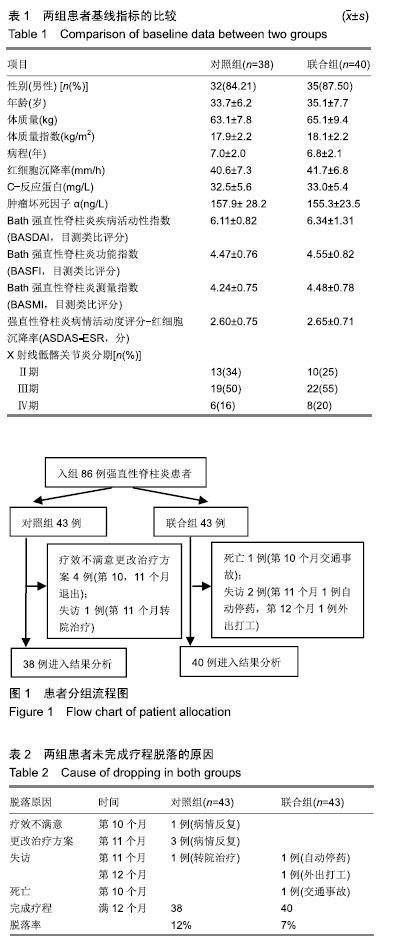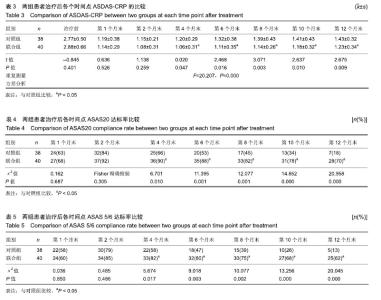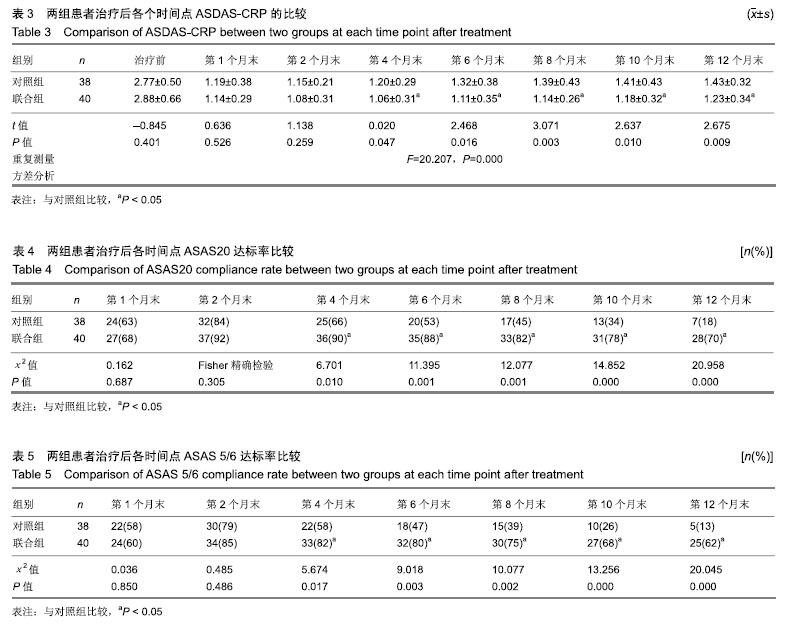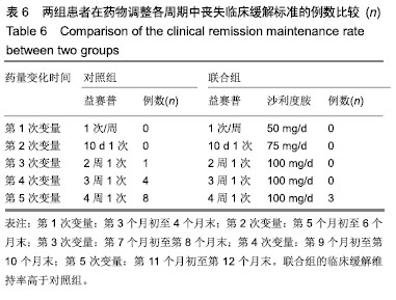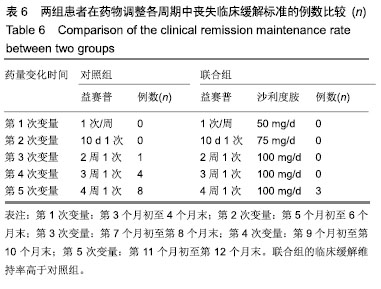| [1]Simone D,Al Mossawi MH,Bowness P. Progress in our understanding of the pathogenesis of ankylosing spondylitis. Rheumatology(Oxford), 2018;57(suppl-6):vi4-vi9.[2]Razumova IY, Godzenko AA.Application of TNF-alpha inhibitors in treatment of uveitis associated with ankylosing spondylitis. Vestn Oftalmol. 2018;134(5):257-262. [3]Druce KL, Aikman L, Dilleen M, et al.Fatigue independently predicts different work disability dimensions in etanercept- treated rheumatoid arthritis and ankylosing spondylitis patients. Arthritis Res Ther.2018;20(1):96.[4]黄志祥,郭叙琴,邓伟明,等.注射用重组人Ⅱ型肿瘤坏死因子受体-抗体融合蛋白减量治疗强直性脊柱炎的疗效分析[J].中华医学杂志,2018,98(15):1158-1161.[5]van Mens LJJ, van de Sande MGH, Baeten DLP. New treatment paradigms in spondyloarthritis. Curr Opin Rheumatol. 2018; 30(1): 79-86.[6]中华医学会风湿病学分会.强直性脊柱炎诊断及治疗指南[J]. 中华风湿病学杂志,2010,14(8):557-559.[7]Machado PM, Landewé R, Heijde DV,et al.Ankylosing Spondylitis Disease Activity Score (ASDAS): 2018 update of the nomenclature for disease activity states. Ann Rheum Dis. 2018;77(10):1539-1540.[8]Molto A, Gossec L, Meghnathi B, et al. An assessment in SpondyloArthritis international society (ASAS)-endorsed definition of clinically important worsening in axial spondyloarthritis based on ASDAS. Ann Rheum Dis. 2018; 77(1):124-127.[9]杨娉婷,赵丽娟,肖卫国.强直性脊柱炎患者益赛普减量经验——为期1年的开放式前瞻性临床研究结果[J].中国医科大学学报, 2011,40(1):57-59,63.[10]Murdaca G, Negrini S, Magnani O, et al. Update upon efficacy and safety of etanercept for the treatment of spondyloarthritis and juvenile idiopathic arthritis. Mod Rheumatol,2018;28(3): 417-431.[11]Maatallah K, Mahmoud I, Belghali S, et al.Reparative radiological changes of hip joint after TNF inhibitors in ankylosing spondylitis. Caspian J Intern Med. 2018; 9(3): 303-305.[12]Kim Y, Park S, Kim HS.The effect of extra-articular manifestations on tumor necrosis factor-α inhibitor treatment duration in patients with ankylosing spondylitis:nationwide data from the Korean College of Rheumatology BIOlogics (KOBIO)registry. Clin Rheumatol.2018;37(12): 3275-3284.[13]郑擎,徐鸣俊.重组人Ⅱ型肿瘤坏死因子受体抗体融合蛋白治疗强直性脊柱炎的临床研究[J].中国临床药理学杂志,2016, 32(17):1561-1564.[14]侯楠.益赛普治疗强直性脊柱炎的临床评价分析[D].济南:山东大学,2017.[15]Boonen A,Boone C,Albert A,et al.Contextual factors influence work outcomes in employed patients with ankylosing spondylitisstarting etanercept:2-year results from AS@Work. Rheumatology(Oxford). 2018;57(5):791-797.[16]Choudhury MR, Hassan MM, Kabir ME, et al. An open label clinical trial of Thalidomide in NSAIDs refractory ankylosing spondylitis. Mod Rheumatol. 2018;28(4): 730-732.[17]邢伟鹏,李无阴,侯宏理,等.沙利度胺治疗强直性脊柱炎疗效的Meta分析[J].中国药房,2018,29(1):116-120.[18]赵清.益赛普联合沙利度胺治疗难治性强直性脊柱炎临床研究[J].中国药业,2017,26(9):47-49.[19]侯涛.沙利度胺治疗强直性脊柱炎的效果分析[J].河南医学研究, 2018,27(4):662-663.[20]张华,王凌,马新美,等.益赛普?沙利度胺序贯治疗强直性脊柱炎的疗效观察[J].中国实用医刊,2011,38(21):7-9. |

